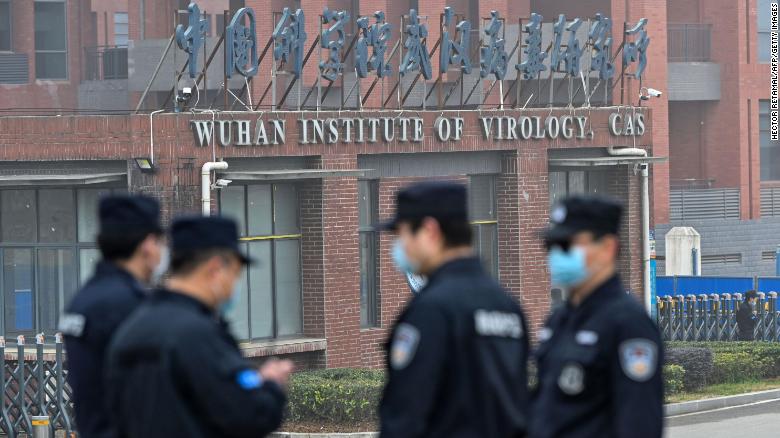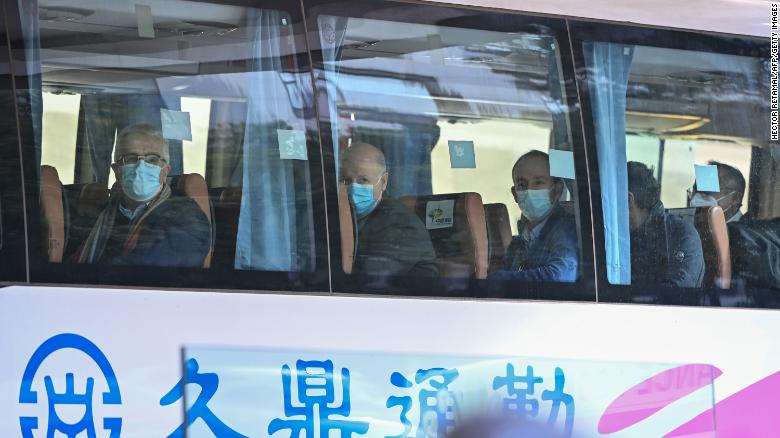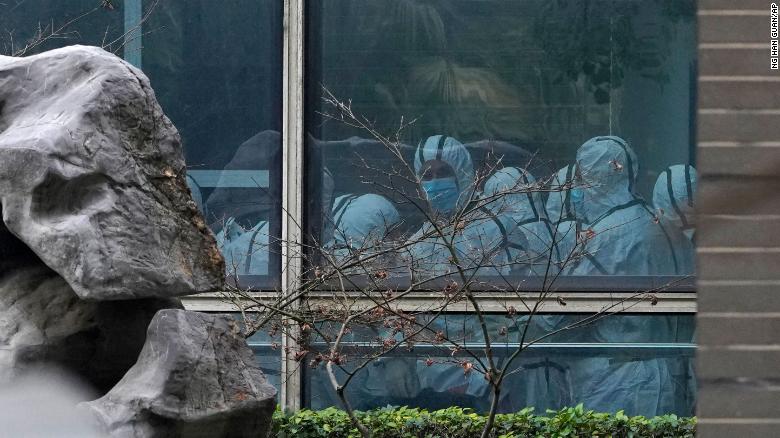(CNN) — Researchers at the World Health Organization (WHO) investigating the origins of the coronavirus in China have discovered indications that the outbreak was much more widespread in Wuhan in December 2019 than previously thought. And they are seeking urgent access to hundreds of thousands of blood samples from the city that China has not allowed them to examine until now.
The principal investigator of the WHO mission, Peter Ben Embarek, told CNN in an extensive interview that the mission had found several indications of the broader spread of 2019, including establishing for the first time that there were more than a dozen of variants of the virus in Wuhan as early as December. The team also had the opportunity to speak with the first patient that Chinese authorities said had been infected, an office worker in his 40s, with no travel history, whose infection was reported on Dec. 8.
The slow emergence of more detailed data collected during the WHO’s long-awaited trip to China could add to concerns expressed by other scientists studying the origins of the disease that it may have spread in China long before its first official appearance in China. mid december.

Security personnel stand guard outside the Wuhan Institute of Virology in Wuhan as members of the World Health Organization team pay a visit.
–
Embarek, who has just returned to Switzerland from Wuhan, told CNN: “The virus was widely circulating in Wuhan in December, which is a new finding.”
The WHO food safety specialist added that Chinese scientists had presented the team with 174 coronavirus cases in and around Wuhan in December 2019. Of these, 100 had been confirmed by laboratory tests, he said, and another 74 through the clinical diagnosis of the patient’s symptoms.
Embarek said it was possible that this larger number – of likely serious cases that had been noticed by Chinese doctors early on – meant that the disease could have affected as many as 1,000 people in Wuhan in December.
“We haven’t made any models of that since,” he said. “But we know … in large numbers … of the infected population, about 15% end up with severe cases and the vast majority are mild cases.”
Embarek said the mission, which included 17 WHO and 17 Chinese scientists, had expanded the type of virus genetic material they examined from the first coronavirus cases that December. This allowed them to look at partial genetic samples, rather than just complete ones, he said. As a result, they were able to collect 13 different genetic sequences from the SARS-COV-2 virus for the first time as of December 2019. The sequences, if examined with broader data from patients in China during 2019, could provide valuable clues about geography. and the time of the outbreak before December.
Embarek said: “Some of them are from the markets… Some of them are not linked to the markets,” including the Huanan Seafood Market in Wuhan, which is believed to have played a role in the first spread of the virus. “This is something that we found as part of our mission… part of the interaction we all had together.”
Variations Raise Bigger Questions
Changes in the genetic makeup of a virus are common and normally harmless, and they occur over time as the disease moves and reproduces between people or animals. Embarek refused to draw any conclusions about what the 13 variants might have meant for the history of the disease before December.
But the discovery of so many different possible variants of the virus could suggest that it had been circulating beyond that month, as some virologists previously suggested. This genetic material is probably the first physical evidence to emerge internationally to support such a theory.
Professor Edward Holmes, a virologist at the University of Sydney, Australia, said: ‘As there was already genetic diversity in the SARS-CoV-2 sequences tested in Wuhan in December 2019, it is likely that the virus was circulating for longer. that only that month.
Holmes, who has studied the emergence of the virus carefully, said these 13 sequences could indicate that the virus spread for some time undetected before the December outbreak in Wuhan. “These data fit with other analyzes that the virus emerged in the human population prior to December 2019 and that there was a period of cryptic transmission before it was first detected in the Huanan market.”


Members of the WHO team investigating the origins of the coronavirus pandemic leave the Jade Hotel on a bus after completing their quarantine in Wuhan on January 28.
–
The WHO team held a three-hour press conference together with their Chinese counterparts in Wuhan to present their findings last week. Since then, more details have emerged about the precise data they had access to, and sometimes they didn’t.
Embarek said Chinese scientists provided the mission with analyzes of 92 suspected covid-19 October and November 2019 cases, patients who had covid-like symptoms and were seriously ill. The WHO team asked that these 92 be screened in January this year for antibodies. Of these, 67 agreed to be tested and all came back negative, Embarek said. He added that more tests are needed as it is unclear whether the antibodies remain in the former patients for up to a year later.
However, the way these 92 cases were distributed in those two months and geographically in Hubei also intrigued Embarek, he said. Embarek said the 92, as they were presented to the WHO team, did not emerge in clusters as is common in disease outbreaks. Instead, they were spaced in small numbers in both months and throughout Hubei province, where Wuhan is located.
“There was no clustering in particular places,” he said. That would have been collected. It is unclear if these 92 cases were related to the coronavirus and what this lack of clustering might indicate.
Embarek also said that the mission was able to meet the first covid-19 patient that China claimed to have registered. A Wuhan resident in his 40s, the man has not been identified and had no recent travel history.
“It has no link to the markets,” said Embarek. “We also talked to him. He has a very, in a way, boring and normal life, no hiking in the mountains. He was an office worker in a private company.
China promises cooperation
China has promised transparency with the WHO investigation. In response to criticism from the United States that it should provide access to its previous raw data, the Chinese Embassy in Washington said: “What the United States has done in recent years has seriously undermined multilateral institutions, including the WHO. , and has seriously damaged international cooperation on covid-19, “said a spokesman for the Chinese Embassy in the United States in the statement.
“But the United States, acting as if none of this has ever happened, is pointing the finger at other countries that have been faithfully supporting WHO and WHO itself,” the statement continued.
The WHO team hopes to return to Wuhan in later months to continue their investigations, Embarek said, though he was unable to provide specific dates for a confirmed trip.
He said the team hopes to urgently examine biological samples that experts say were not available on this first trip, specifically thousands of samples from the Wuhan blood donor bank dating back two years.
“There are around 200,000 samples available there that are now insured and could be used for a new set of studies,” said Embarek. “It would be great if we could [trabajar] with that”.
Embarek said there could be technical difficulties in accessing those samples. “We understand that these samples are extremely small samples and are only used for litigation purposes,” he said. “There is no mechanism that allows routine studies with this type of sample.”
He said that some other biological test samples that might have proved useful during the Wuhan mission were also not available to them. “Many of the samples were discarded after a few months or weeks, depending on the purpose for which they were taken,” he said.
Embarek said the circumstances of the mission, of intense quarantine periods and social distancing, had led to some frustrations, along with global scrutiny of his conduct and findings.
“We were working closely for a month between two groups from a larger group of scientists,” he said. And of course, from time to time… you, as always, among passionate scientists, have a heated discussion and then a discussion about this and that.
“Remember, we have had the entire planet on our shoulders 24 hours a day for a month, which does not make it easy for scientists to work.”
–

